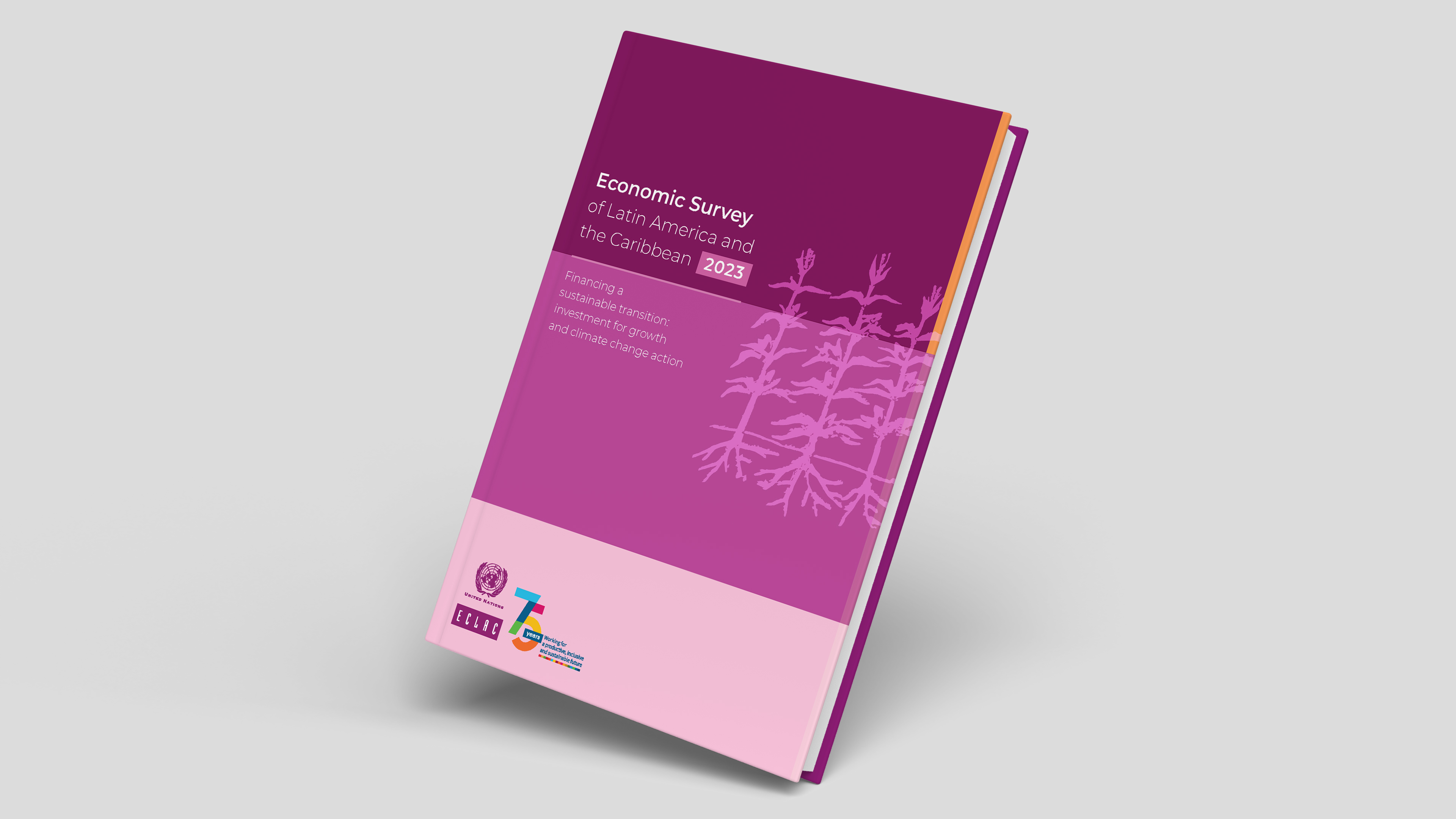Press Release
The Economic Commission for Latin America and the Caribbean (ECLAC) released today its annual report entitled Economic Survey of Latin America and the Caribbean 2023. Financing a sustainable transition: investment for growth and climate change action, in which it forecasts that the region’s economies will maintain low levels of growth this year and next year, affected by a negative global and very complex regional economic outlook.
According to the document – one of the institution’s main economic reports, which has been published since its beginnings in 1948 – average regional Gross Domestic Product is expected to grow by 1.7% in 2023. Meanwhile, a slight decline is projected in the growth rate for 2024, leading to an increase of 1.5% of the regional GDP growth.
According to the United Nations regional organization, the global economy’s dynamics remain on a path of low economic and international trade growth. Despite declines in the inflation rate, developed countries will likely continue with their contractive monetary policies, which means no significant cut to external interest rates is expected this year and financing costs for our countries will remain high.
Although the public debt of the region’s countries has fallen, it is still elevated as a proportion of GDP, which, coupled with the increase in external and internal interest rates and an expected decline in tax revenue due to lower growth, will result in limited fiscal space for the region as a whole. In addition, less dynamism in job creation is anticipated, along with growing social demands.
“Latin America and the Caribbean’s low growth may be aggravated by the negative effects of an intensification of climate shocks, if the investments that countries need in climate change adaptation and mitigation are not made,” stated ECLAC’s Executive Secretary, José Manuel Salazar-Xirinachs.
In 2023, ECLAC forecasts that all the subregions will have lower growth than in 2022: South America is seen growing by 1.2% (versus 3.7% in 2022), the group made up of Central America and Mexico by 3.0% (3.4% in 2022), and the Caribbean (excluding Guyana) by 4.2% (6.3% in 2022).
The projections for 2024 indicate that low economic dynamism will persist in the region. It is forecast that the international context will continue to be unfavorable, with growth in global GDP and trade far below the historical averages. At the same time, in the domestic arena, fiscal policy space will continue to be limited, although reduced inflation in the region creates more room for countries’ monetary policies. In these circumstances, ECLAC forecasts average growth in 2024 of 1.2% for South America, 2.1% for Central America and Mexico, and 2.8% for the Caribbean (excluding Guyana).
The Economic Survey 2023 indicates that the low growth in economic activity in 2023 and 2024 will result in a deceleration of job growth, which is seen expanding by 1.9% in 2023 and 1.1% in 2024. Furthermore, there are concerns over employment quality in this context of low growth, since it is very likely that workers will become more vulnerable, have lower levels of social protection and be employed in less productive sectors.
“Given the challenges of boosting growth and tackling climate change, it is essential to enhance public and private investment. Public investment in the region is low in comparison with advanced economies, and even other developing regions. This low level of investment has translated into a stock of public capital – infrastructure – that is insufficient for boosting economic growth and promoting productive development,” ECLAC’s report emphasizes.
The macroeconomic impacts of climate change could be very significant for the region’s countries. The estimates presented in the Economic Survey of Latin America and the Caribbean 2023 indicate that by 2050, the GDP of a group of six countries could be between 9% and 12% lower than what would correspond to a scenario of trend growth if investments are not made to offset climate shocks. The volume of additional investment needed is exceptionally large, between 5.3% and 10.9% of GDP per year. This would represent a significant increase from current investment levels.
However, the ability to invest will depend both on access to financing as well as the cost of financing. “There must be a considerable increase in concessional financing that would allow for sustaining investment trajectories over time. These efforts must be accompanied by domestic macroeconomic policies that favor resource mobilization,” José Manuel Salazar-Xirinachs asserted.
Finally, the report warns that in order to confront the macroeconomic effects of climate change, national, regional and global efforts will be needed in four main areas: 1) Fiscal space, through an increase in revenue and in the progressivity of the tax structure, green public spending and access to new financing mechanisms, such as thematic bonds; 2) Management of financial and foreign-exchange risks through macroprudential policy; 3) Mobilization of concessional financing and development banking, to deepen climate finance, through multilateral, regional and national development banks and to foster Official Development Assistance (ODA) flows to fight climate change; and 4) Debt relief mechanisms, such as the establishment of institutional mechanisms for restructuring, and the inclusion of clauses linked to disasters and hurricanes, and achievement of climate targets.


